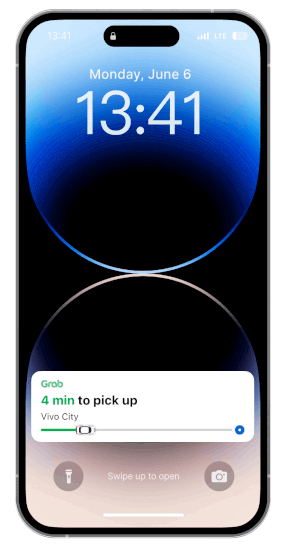The estimated time-of-arrival number in the app is perhaps often overlooked in its significance to users. It’s one of the metrics that users look at repeatedly as they await a food delivery or a ride.
Keeping it accurate is key to helping users know when to be there when their ride arrives, or to manage expectations on a food order.
(Read more: Grab now shows users their rides and deliveries happening in real-time on iPhone’s Live Activities)
Calculating the ETA is a key backend function and happens for every single booking on Grab (NASDAQ:GRAB). Behind the scenes, many variables influence the calculation, including real-time traffic and weather conditions. And as the variables change, we update the ETA too if there are any changes, so that users stay informed.
How we cut down costs by 95 per cent
Getting the ETA is a resource-heavy function. We calculate it for the millions of trips that happen on Grab every day across eight countries in Southeast Asia.
Previously, we maintained over 200 unique machine learning models, one for each aspect of a ride, which can include time of day, vehicle type, a city’s geography, and so on. Managing so many models was both complicated, requiring manpower to tend to error alerts, and took up expensive server resources to run.

Since we deployed Catwalk, it’s driven down the cost of computing by 95 per cent, while even raising accuracy by 5 per cent.
To solve this, we ended up consolidating all of those models down to just 16—one for food and delivery each, and for the eight countries Grab is in. We use an internal machine learning platform called Catwalk as a central place to take in all the data instead of maintaining each model separately.
Since we deployed Catwalk, it’s driven down the cost of computing by 95 per cent, while even raising accuracy by 5 per cent.
A huge advantage of consolidating the information is we can automatically adapt and retrain our models on a weekly cadence. This has allowed us to deal with variances in data coming in, such as changing traffic patterns and feature drift—a machine learning concept referring to changes in data that make models inaccurate over time.
This adaptiveness of the model means we’ve also had a sharp drop in the occurrence of system errors. Today, we’re experiencing significant improvement in stability to the overall system.
What’s next: Live data, live learning
To continue to improve the ETA data feeding into our engine, we’ve set our sights on building a pipeline that can provide relevant, up-to-date information from our driver-partners on the road.
While Catwalk is faster than our older ETA backend, our teams are working on having the model adapt and correct itself live as data comes in. This represents a big step up from training it on historical data, and we expect that this will allow our ETA predictions to be more stable, accurate, and nimble with changes in the real world.
This reliability is core to what users have come to expect from the Grab experience.
3 Media Close,
Singapore 138498
Komsan Chiyadis
GrabFood delivery-partner, Thailand
COVID-19 has dealt an unprecedented blow to the tourism industry, affecting the livelihoods of millions of workers. One of them was Komsan, an assistant chef in a luxury hotel based in the Srinakarin area.
As the number of tourists at the hotel plunged, he decided to sign up as a GrabFood delivery-partner to earn an alternative income. Soon after, the hotel ceased operations.
Komsan has viewed this change through an optimistic lens, calling it the perfect opportunity for him to embark on a fresh journey after his previous job. Aside from GrabFood deliveries, he now also picks up GrabExpress jobs. It can get tiring, having to shuttle between different locations, but Komsan finds it exciting. And mostly, he’s glad to get his income back on track.

